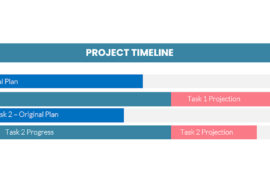This week I’ve got a treat. This article was written by Maria Hart exclusively for EPMGuidance. Hope you like it!
Thanks to the Internet, remote working has become more popular than ever before. CIO details that not only has the number of telecommuting workers grown by 140% in the last 15 years, but the companies that do provide remote working options have also enjoyed 20% less employee turnover rates.
At the same time, transitioning to remote work is not that easy. It requires a variety of tech-driven adjustments in the modern workplace, which in turn has pushed the demand for people with the right skills to lead modern teams. The U.S. Bureau of Labor Statistics (BLS) projects a 7% growth in management occupations compared to other jobs – a trend that is projected to continue until 2028. Team leaders and middle managers play a large role in ensuring that remote teams work smoothly, which brings us to our first key to ensuring collaboration.
Remote Teams Need Tech Savvy Managers
The people in charge will undoubtedly play a huge role in how well remote team members can collaborate among themselves. They don’t necessarily have to be tech wizards – although it could certainly help. Remote team leaders need to be tech savvy at least at a fundamental level. They need to be familiar with the different apps and platforms for communicating, organizing tasks, and training within remote teams. This is on top of having actual managerial and leadership skills for encouraging collaboration. This is the minimum combination of skills necessary for a remote team leader to be effective.
Know Your Remote Working Tools
Today, there’s certainly no shortage of apps that can help remote teams collaborate better. Slack is an all-around messaging and file exchange app that allows users to make and customize different chat rooms. For screencasting, Zoom has been the most popular choice among new remote teams because of how easy it is to use and its many features. If you want to be on top of your team’s work hours, there’s Hubstaff, which you can also use to monitor screens remotely. Whichever tools you try, make sure that every team member has the device to use them and make them part of your daily operations.
Measure Results, Not Work Hours
It’s important to know whether or not remote team members are putting in the necessary work hours to accomplish the tasks at hand. At the same time, different individuals tend to work to different schedules. Rather than being strict about work schedules, be strict about deadlines. This is why 100% remote working company GitLab puts measuring results and not work hours at the top of their suggestions for managing remote teams. It’s a simple solution that not only respects the preferred working schedules of individual team members, but also allows the team to keep track of deadlines and which tasks to prioritize.
Value Your Team’s Mental Health
A workplace mental health proposal lead by doctors from Johns Hopkins Bloomberg School of Public Health cites that 30-50% of American adults suffer from mental illnesses – and that the global societal impact of poor mental health is predicted to rise to $6 trillion by 2030. Make no mistake about it – mental health impacts your bottom line, especially if your company is in the middle of a large digital transformation. Valuing mental health means discussing non work-related concerns over communication channels. It can also mean allowing overworked and/or stressed employees to take mental health days off. Simply being kind when it comes to giving and accepting criticism about work can also go a long way towards establishing a virtual workplace that truly values mental health.
Written exclusively for Epmguidance.com
by Maria Hart





